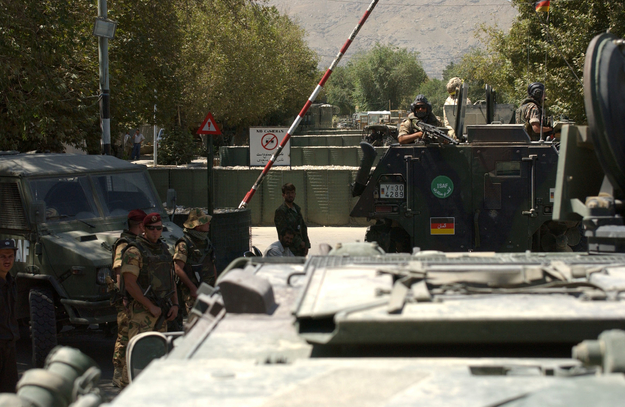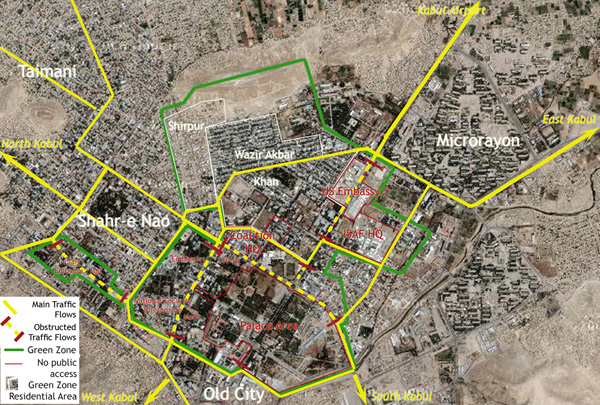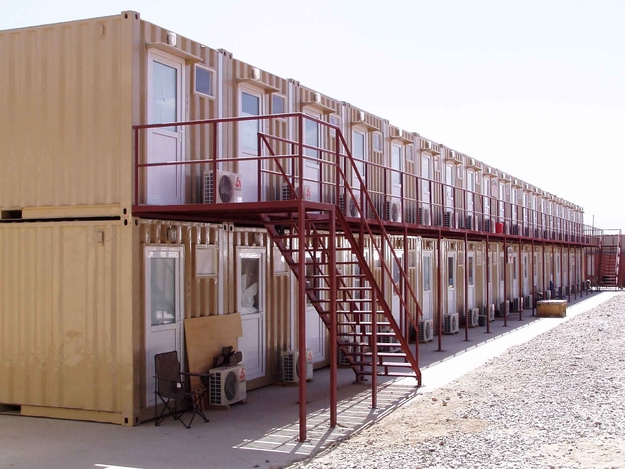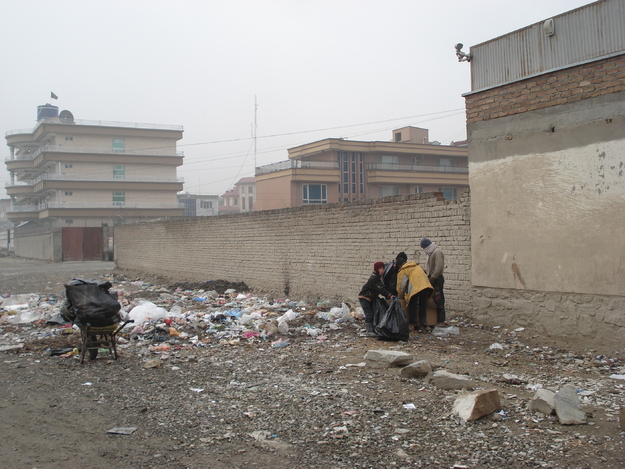This central area of Kabul is the most difficult one to wander around in. Photographing even anodyne street scenes can get you into heavy trouble with foreign private security contractors and the Afghan cops they've trained, even if you are a foreigner. Some areas are completely off-limits, meaning you sometimes must make long detours. Your main reasons for coming here will include visiting internationals in their offices, going to restaurants, receptions and international parties, or simply getting from one part of the town to the next.
Sherpur
This area used to be a large terrain belonging to the Ministry of Defense. In 2003 then Minister of Defense Fahim (now feared godfather of the Panjshiri mafia and vice-president) expelled the residents who had been squatting the land and divided it up between his cronies and allies in government. These proceeded to build the most garish mansions, which they rent out to foreign organizations for a fortune - up to 30,000 USD a month. See Revolutionary Afghan Women's Association about Sherpur for more about this scandal.
Wazir Akbar Khan
This area was built up in the 1960 and '70s by rich Kabulis that didn't own land in the center. The villas show influences of Italian and French riviera architecture of that period. They are now mostly rented out as residencies to foreign organizations, and if you have your contacts you are sure to come to some good parties here. This neighborhood also counts many restaurants for foreigners (Thai, Croatian, Chinese, Lebanese).
The Iranian restaurant 'Shandiz' built on the grounds of the central park not only has juicy kebabs and rice but you can also meet some of the most powerful Afghan warlords here at lunchtime. These do not normally mix with foreigners, which are seldom to be seen here.
This neighborhood is bordered on the North East side by Bibi Mahru hill, with its famous empty Olympic swimming pool at the top (reportedly used for executions during the civil war). Given that this hill separates the Green Zone from the dirt-poor neighborhoods on the other side, the hill has an unpleasant 'No Man's Land' feeling to it, but it offers very nice views over the city.
Wazir Akbar Khan is the only area within the Green Zone where you can walk without too much trouble.
The US Embassy area
The US Embassy in Kabul is the second largest US Embassy worldwide, after Baghdad. Thousands of foreign service and aid personnel and a host of private contractors live and work on the two embassy compounds in 'Connex' containers, usually in cramped an uninspiring conditions. Security does not allow them out, to visit the country they have come to rebuild, and tours of duty are usually short.
Close to the US Embassy are the equally impenetrable headquarters of ISAF (the International Security Assistance Force) now led by NATO, the civilian headquarters of the US-led military coalition, and the United Nations Assistance Mission to Afghanistan (UNAMA). These vast compounds, together with the adjacent embassy grounds of among others the UK, France, Germany and Italy, spill over onto the streets with concentric layers of blast walls, razor wire and miradors. Only one road through the area remains (more or less) open.
See US soldiers blog for detailed, interesting and sometimes funny descriptions of how life is in Afghanistan for US military.
The Arg
Built in the late 1800s and early 1900s by the kings of Afghanistan, the palaces and surrounding area known as the Arg now house President Karzai's residence, his offices, the Ministries of Defense and Foreign Affairs, the National Treasury and other key institutions. To get an idea of how drab and dreary are the 'democratic' Afghan institutions the West is supporting, see the official websites of, for example, the Presidency: Karzai's official website.
Some of the buildings here are truly interesting, but impossible to visit. The roads surrounding this vast green area are also usually cut off, on the North side by the CIA headquarters (reportedly housed in the Ariana hotel).
We advise our Mediamatic guides to visit this area on Google earth, as it can be downright dangerous to walk around here. Even when you're a blond Westerner.



